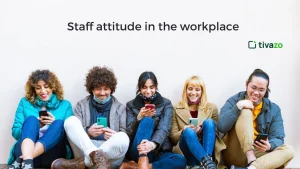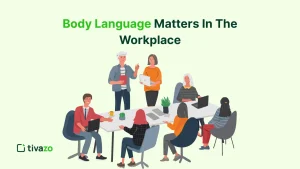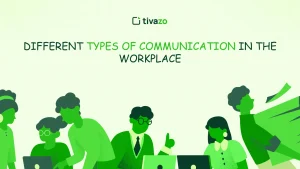Workplace conversation is more than chit-chat; it is an effective tool that determines your career and affects the performance of a team. The way you talk in the workplace impacts teamwork and disputes, and how people view your career as a whole.
Communication in the workplace is based on listening, making messages clear, as well as knowing the communication elements in the team. Effective communication is one that is respectful and intentional in nature, which increases productivity, minimizes misunderstanding, and strengthens relations with co-workers and superiors.
Conversations, whether in formal meetings or in an informal conversation, have an influence on your success at each level. The building of effective communication skills, both written and oral, feedback exchange, coping with virtual conversations, etc., will allow creating an atmosphere in which collaboration and innovations thrive. This article tells the reader why workplace conversation is important and how you can enhance it to improve your career.
Key Highlights:
- Why Workplace Conversation Matters?
- 5 Tips for Better Workplace Conversation Skills
- Barriers to Effective Workplace Conversation
- Conversation Starters for Different Situations
- Workplace Communication Examples
What is Workplace Conversation?
Workplace conversation can be described as the daily conversations that involve the sharing of information, ideas, and responses amongst colleagues, managers, and teams in the workplace. It incorporates nonverbal and verbal communication, active listening, and the capability to negotiate around formal meetings and casual chats. Workplace conversations allow generating collaboration, solving problems, and strengthening rapport, which, in turn, affects the quality of communication in the team.
These interactions take place in a physical or digital environment and determine the organizational culture and influence productivity. Effective communication in the workplace is one of the most important skills in working communication, developing a clear message, decreasing the barriers to communication, and building strong professional relationships, resulting in success.
Why Workplace Conversation Matters?
The very pillar of any working relationship is the notion of workplace conversation. A 2023 report by the Harvard Business Review states that effective internal communication at companies results in a 47 percent increase in the returns to shareholders as opposed to companies with ineffective communication. Engaged, Comprehensible and Polite Dialogue increases interactions among the employees, lowers misconceptions, and further leads to innovation.
Furthermore, having good communication influences conflict resolution, project coordination, and leadership directly. Otherwise, the teams found it hard to read the same goal, leading to time wastage and loss of morale.
5 Tips for Better Workplace Conversation Skills
A few steps in mastering workplace conversation can change the manner in which you relate to your colleagues and guide a conversation. The five effective hacks work towards communication strategies, which are useful in an ideal, realistic professional environment, making it clearer, more trusting, and inclined towards collaboration.
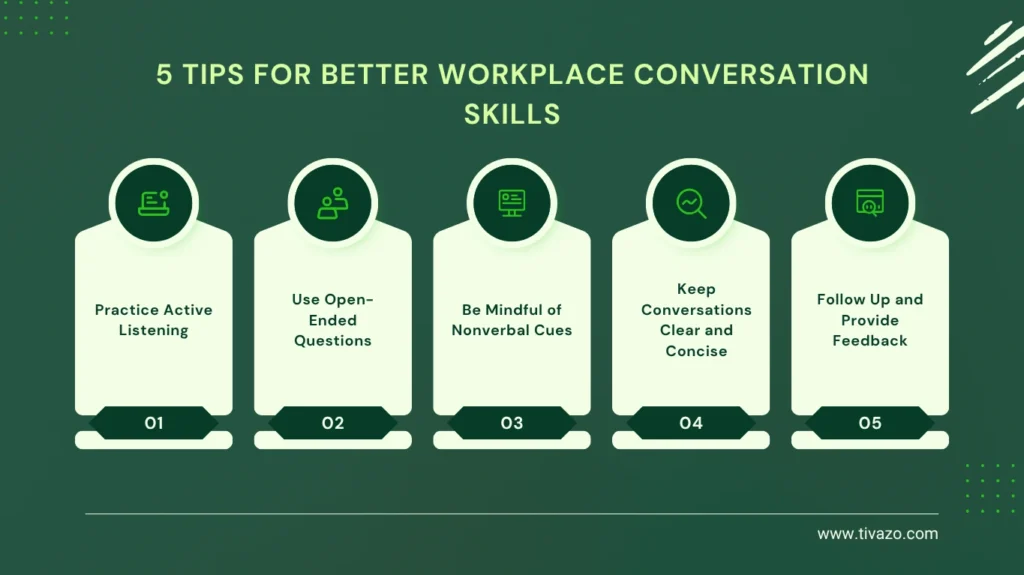
1. Practice Active Listening
One of the most important elements of a proper workplace conversation is active listening. It is not just listening to words, but it is an overall act of being very interested in the speaker, getting the message that they are purporting to give, and then going about giving it back to them as well. This degree of attention is highly respectful and contributes to developing trust among colleagues, which is the core of establishing a positive team communication pattern.
Active listening will help you cut down cases of miscommunication or misunderstanding. It is better to concentrate on what a person is saying, their tone, and gestures, rather than pondering your next lines when a person is speaking. Paraphrasing what was said or summarizing it will help you remember better and act as a validation that you have been listening attentively, which will increase the clarity of communication, and stating things directly.
A recent study available in the International Journal of Business Communication indicated that active listeners are viewed as more credible, understanding, and reachable. Active listening will also add stability to relationships, as well as help solve conflicts more effectively and promote cooperation in the workplace.
2. Use Open-Ended Questions
A good method of enhancing a workplace conversation is to ask open-ended questions and make people take an interest. As opposed to yes-or-no questions, open-ended questions encourage colleagues to express their ideas, share thoughts, and experiences, which has a positive impact on team communication. These are the kind of questions that can be used to initiate a deeper level of conversation to promote authentic connection.
As an example, rather than asking the question, “Did you finish the project?” ask, “How did you go about the challenges of the project?” This provokes details and manifests considerable insights. Open-ended questions make conversation feel more equal and inclusive as well, and often, everyone gets an opportunity to state their views and feel understood.
The regular use of this method can enhance teamwork and the innovative process. It indicates that someone cares about feedback and increases morale and trust. The acquisition of knowledge on how to ask open-ended questions in the workplace improves the skill of workplace conversation and raises the general level of communication competency.
3. Be Mindful of Nonverbal Cues
Nonverbal communication is important in defining workplace conversation and the reception of the messages. It has been said that as much as 55% percent of communication is nonverbal, according to psychologist Albert Mehrabian; body language, facial expression, and eye contact all form part of communication. Such cues may either support your words in a way or cause confusion when not in agreement with what you speak.
Paying attention to what you say with your eyes, face, etc., makes sure that the message you deliver will be as you intend it. An example is on eye contact; it is important to show confidence and interest through it as well as posture, being open tends to show trust and openness. In contrast, when arms are crossed or when eye contact is not made, this may be an indication of defensiveness or the lack thereof, which could prove detrimental to job relationships.
Another prowess that good communicators possess is being sensitive to the nonverbal actions of others so they can decipher the reactions others have and respond appropriately. Being aware of these subtle signals enables them to proceed with hard discussions and solve the disputes much more easily, making their conversation in the work setting more explicit and more respectful.
4. Keep Conversations Clear and Concise
In a world of modern workdays where efficiency is the order of the day, clarity and conciseness are of prime importance in a workplace conversation. Managers and other colleagues prefer such messaging because they can easily receive the information and avoid being misled by jargon or excessive information. This is not only time-saving but time-minimizing of misunderstandings.
Applying such frameworks as the BLUF method (Bottom Line Up Front) can be taken into account to organize your thoughts and deliver important information at the beginning of the conversation. The given technique can be particularly helpful on occasions such as in meetings and e-mailing or video conferencing, during which it can be hard due to time constraints and attention to be able to get one to clearly explain themselves. Effective communication improves productivity by leaving everybody informed about expectations and subsequent actions.
And notice the meaning of concise- not hurried, not half done- but short. It implies presenting your message intelligently using sufficient information so as to be comprehensible, but not unnecessary information. This moderation enhances efficiency in communication at the workplace as well as portrays professionalism.
5. Follow Up and Provide Feedback
After a conversation, a follow-up is another important step in the process that closes the communication circle in a workplace conversation. The importance of a fast follow-up email or a message is to ensure common ground and record important moments of the session so that they are not misunderstood in the future. It also portrays that you are positive about the discussion and that you would go through with it.
Giving constructive feedback in cases where the conversations are going on may enhance professional relationships. Good feedback is precise, practical, and respectful, allowing peers to develop while keeping the trust intact. Feedback is a part of ongoing learning and a culture of cooperation with each other; when conversations about feedback become regular at work, it evolves into such a culture.
Periodic check-ups and reactions are other indications of interpersonal skills that work to promote your reputation as a professional. They indicate responsibility and promote free discussions; thus, future workplace communication will become more effective and favorable.
Barriers to Effective Workplace Conversation
There are some barriers that prevent workplace conversation; however, even the best-intentioned conversation may turn out to fail. By understanding and dealing with these barriers, communication in a group of people can be positively enhanced and the chances of a misunderstanding decreased, and positive relationships become stronger.
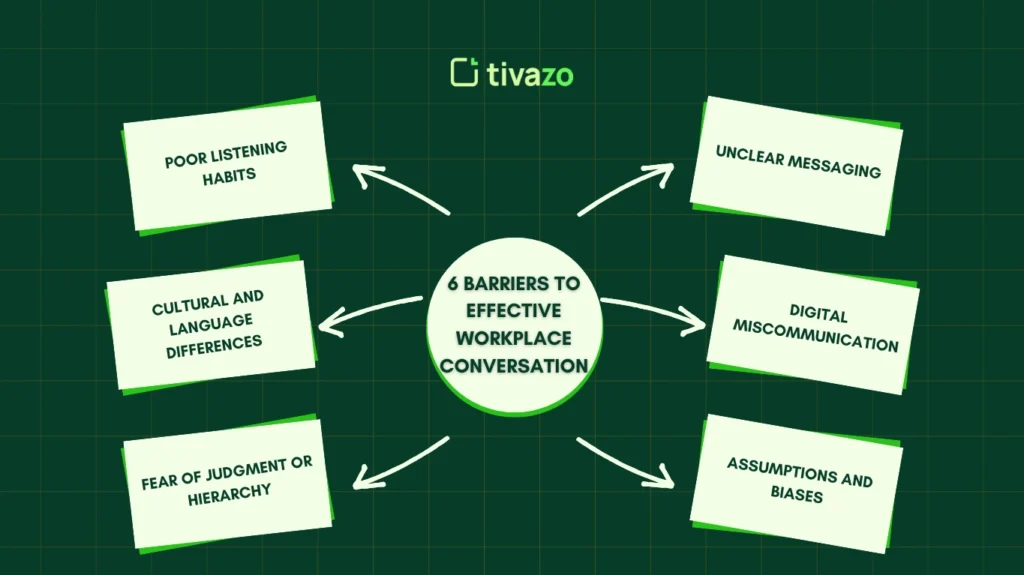
1. Poor Listening Habits
At the point when employees do not engage in active listening, important communications are either not received or not properly received. People can start composing what to communicate, rather than listening to what is being communicated. This will form breaches in oral communication, consultation will be eroded, and either cause conflict or repetition in the workplace.
2. Cultural and Language Differences
The workplace in the present day is mostly diverse, and this makes discussion rich but also more complicated. Variation in tone, body language, and language fluency may disrupt workplace conversation. As an example, where a pause can be respected in one culture, it can be seen by another as a lack of interest. Cultural awareness contributes to the enhancement of communication in a team and gains respect among the team members.
3. Fear of Judgment or Hierarchy
Workers might not feel like workplace conversation in the open due to fear of prejudice and rejection, particularly in culture-based societies (hierarchies). This cramps the voice of employees, and blocks knowledge-sharing and resolving conflicts. Leaders should promote the many aspects of psychological safety that everyone on the team feels free to raise his or her voice without incurring any penalty.
4. Unclear Messaging
Unclearity is another problem that prevalently exists in the workplace conversation, both in writing and in speech. Speaking in jargon, wandering, or not defining what is expected of the person will lead to confusion, time wastage, and duplication of mistakes. Effective communication tips make the process quick, and it is easy to get everyone on the same page.
5. Digital Miscommunication
In a hybrid and remote working position, virtual communication takes over, through email, other messaging applications, or video meetings. However, digital media do not convey such aspects as tone of voice and facial expressions. A sudden Slack message can be perceived as rude or cold unintentionally. Virtual communication can ensure healthy workplace conversation by selecting an appropriate channel, making use of tone and context.
6. Assumptions and Biases
Immediacy or instant judgment on the part of the tone, intent, or even capability develops an imaginary wall in communication. Such presumptions may affect the work, lead to bitterness, and inhibit open communication. Being empathetic and verifying biases are some ways to maintain workplace conversations productive, fair, and open.
A combination of self-awareness, empathy, and proactive communication is important to overcome these obstacles. Once you tackle the above issues directly, you will be able to increase the quality and overall power of every conversation you hold at work dramatically.
Conversation Starters for Different Situations
The workplace conversation should be started properly, and it can imply a mood of trust, collaboration, and meaningful engagement. It can be at the workplace when you are inducting a new team member or starting a project, such that when one employs mindful conversation openers, you are able to establish easier interaction, develop effective workplace connections, or enhance team communication.
Below are examples of specific job situations:
1. New Team Introductions
When someone new joins the team, initiating friendly and inclusive conversation makes them feel welcome.
- “What inspired you to join this company?”
- “What’s one thing you’re looking forward to in your new role?”
- “Have you had a chance to explore the office or virtual tools we use?”
These icebreakers help ease first-day nerves and open the door to ongoing workplace conversation.
2. Project Kickoff Meetings
Strong collaboration starts with the right questions. At the start of any project, you want to clarify roles, expectations, and goals.
- “What do you think is the most critical part of this project’s success?”
- “Where do you see potential challenges, and how can we prepare for them?”
- “How would you like to communicate progress—weekly check-ins or async updates?”
These questions promote clear messaging and encourage aligned team communication from the beginning.
3. Daily or Weekly Check-ins
Routine check-ins are ideal moments to check engagement, surface blockers, and strengthen trust.
- “What’s one win you had this week?”
- “Is there anything holding you back today that we can help with?”
- “How are you feeling about your workload right now?”
These keep workplace conversations human-centered, especially important for maintaining employee engagement.
4. Cross-Department Collaboration
When working with people you don’t interact with regularly, it’s helpful to bridge the gap with curiosity.
- “Can you tell me more about how your team supports this part of the process?”
- “What’s something people often misunderstand about your role or team?”
- “What’s the best way for us to stay in touch throughout this project?”
Such conversation starters build rapport across departments and encourage collaboration.
5. Virtual Conversations
In remote or hybrid settings, spontaneous chats are rare. You often need to be more intentional in how you engage.

- “What’s your go-to productivity trick when working from home?”
- “Have you had any challenges communicating across time zones lately?”
- “What’s something non-work-related that made you smile this week?”
These light, human touches improve virtual conversations and keep remote teams connected.
Workplace Communication Examples: Real-Life Scenarios
In order to understand the possible ways of navigating workplace conversation, pay attention to these practical examples, which illustrate effective communication in typical professional situations.
Scenario 1: Giving Feedback
A more effective manner of voicing out the problem in a workplace conversation is not to say, your report was late, but to say, You filed the report after the due date. Is it possible to talk about the reason for the delay and how I could assist you next time?” Such wording helps to engage in active discussions and lower defensiveness, which leads to a more collaborative situation.
Scenario 2: Team Brainstorming
As a way of facilitating employee contributions within a team, the question, What new ideas can you recommend to enhance client contact, is better as a workplace conversation opener compared to the ambiguous, Do you have any ideas? The targeted question provokes creativity and deeper input from members of the team.
Scenario 3: Virtual Meeting Check-in
When starting a virtual meeting, one can begin with the phrase, How is everyone doing with this project? The question asked before each meeting in these teams is, What roadblocks do we need to address?” This establishes the theme of honesty and openness in the workplace. This type of setting leaves team members with a secure environment to air their concerns and does its best to keep a project on course.
Improving Conversations at Work: Final Tips
- Encourage regular check-ins beyond formal meetings.
- Use technology thoughtfully, don’t let emails or messages replace meaningful face-to-face or video conversations.
- Train teams on communication skills, including nonverbal and virtual cues.
- Recognize and reward employees who exemplify excellent workplace conversation habits.
Conclusion
It is a crucial part of professional development, uniting teammates, and making organizations successful. With attentive listening, probing questions, attention to body language, and the ability to adapt to diverse communication environments, you could make a common interaction an interrelational communication experience and thus a collaborative experience.
Which are some of the strategies that you will attempt to use to enhance workplace conversations?
FAQ’s
What are good conversation questions for work?
Good questions for workplace conversation are open-ended and encourage meaningful dialogue. Examples include: “What challenges are you facing on this project?”, “How can we improve our team collaboration?”, or “What skills would you like to develop?” Such questions foster engagement and show genuine interest in your colleagues’ perspectives.
How to start a conversation in a workplace?
Starting a workplace conversation can be as simple as greeting someone warmly, commenting on shared experiences, or asking for help. Icebreakers like “How was your weekend?” or “Have you tried the new project management tool?” create a comfortable atmosphere and open the door for deeper communication.
How do you talk professionally?
Talking professionally in the workplace means using clear, respectful language, avoiding slang or jargon, and focusing on active listening. Maintaining positive body language, being concise, and tailoring your tone to the audience also contribute to effective workplace conversation and build credibility.

